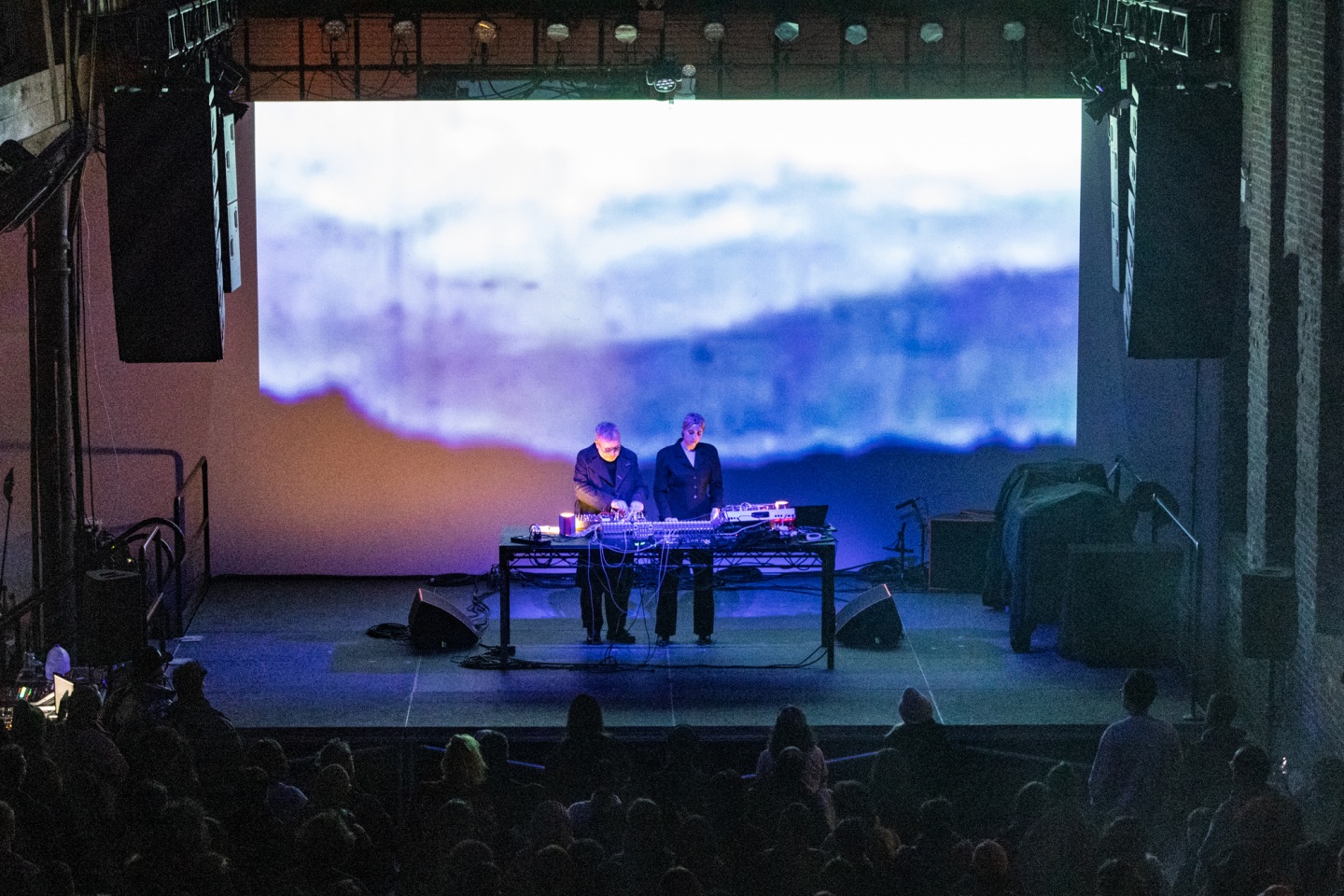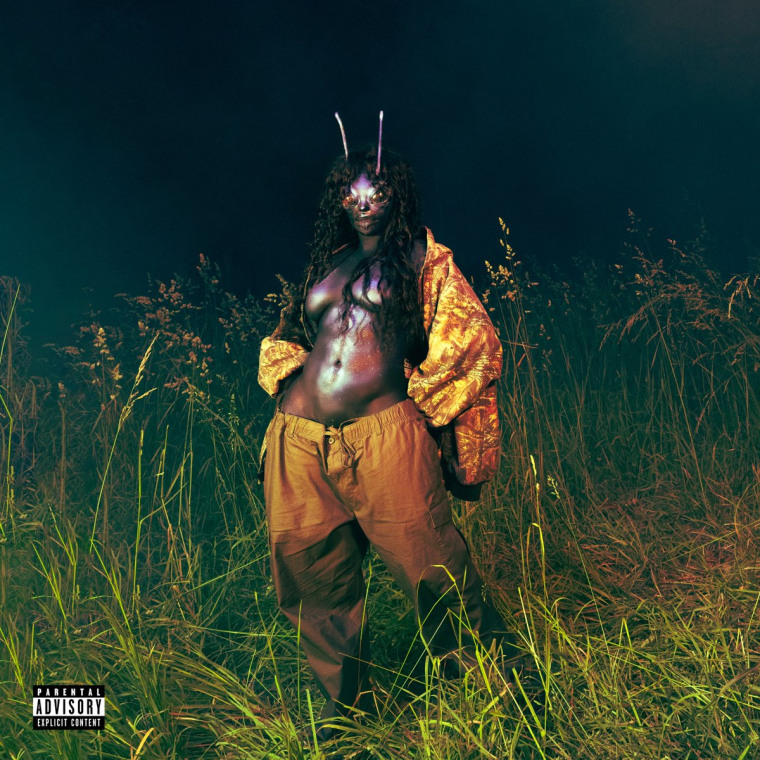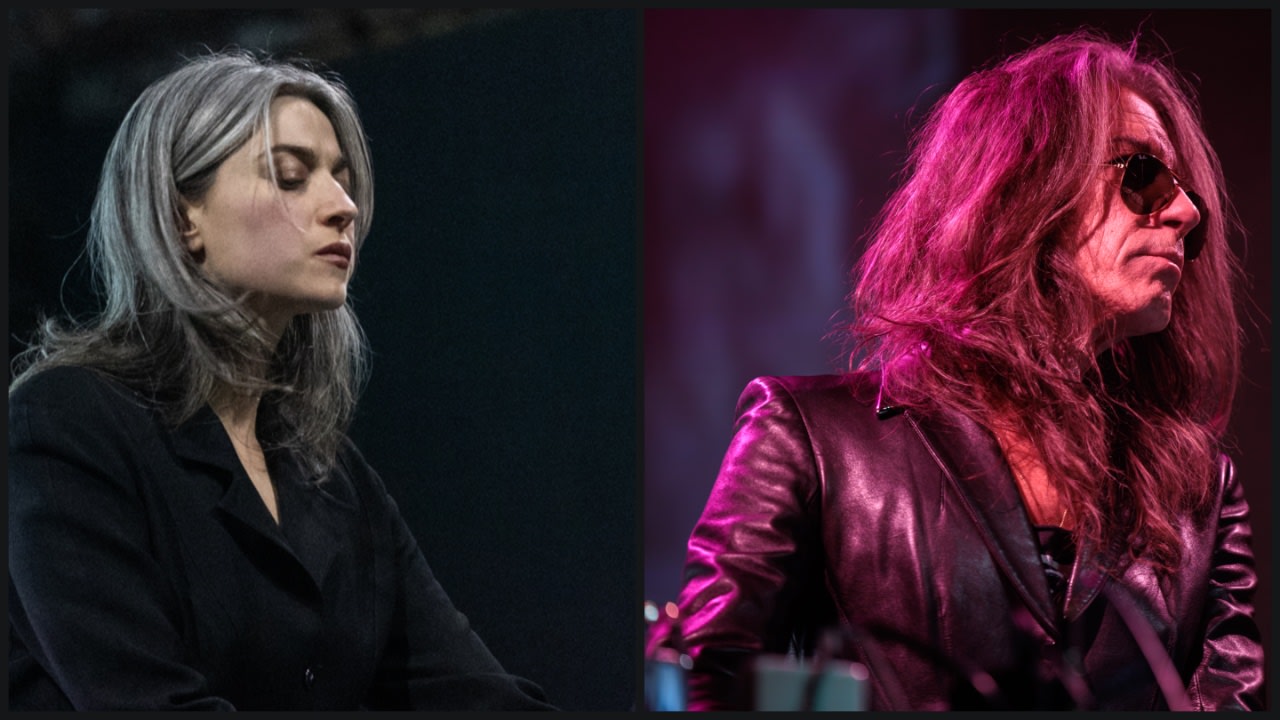
Left: Kali Malone, photo by Ellen Qbertplaya. Right: William Basinski, photo by Walter Wlodarczyk. Photos courtesy of Pioneer Works.
Last week, Pioneer Works — a hulking warehouse in industrial Red Hook turned concert venue, gallery, and co-working artist space — held an experimental music exhibition, hosting five sets from nine titans of the form. Headlined by Kali Malone and William Basinski, respectively, the two nights of sound presented radically different conceptions of the drone: the sustained tone that is one of music’s most ancient forms (along with the drum beat) but has been a consistent feature of its avant garde for the better part of a century.
On Wednesday, December 13, organist, composer, and synthesist extraordinaire Kali Malone took over the room, starting off in duet with former Coil and Psychic TV member Drew McDowall. The joint performance saw Malone and McDowall huddled around a table of modular synths — and, in Malone’s case, a small MIDI keyboard — twisting knobs that slowly morphed the black sound cloud issuing from the venue’s towering speakers and gathering above the room. Theirs was a deeply textural drone, molding to their touch like clay on a throwing wheel.
Drew McDowall (left) and Kali Malone. Photo by Ellen Qbertplaya, courtesy of Pioneer Works.
A much more spartan landscape was constructed in the set that followed. French composer François Bonnet (aka Kassel Jaeger) and drone metal legend Stephen O’Malley — the co-founder of Sunn O))) and, as of this past summer, Malone’s husband — performed together, playing guitar and mapping their instruments onto the synths, mixer, and effects pedals splayed out across the table between them.
Bonnet and O’Malley’s set was a master class in gradual growth, projecting an air of restraint as overtones crept into the quietly accumulating maelstrom. O’Malley’s shows with Sunn O))) are punishing experiences, the group’s amps pushing out enough air to alter the physical atmosphere of the room. With Bonnet, though, he seemed more interested in finding new spaces for two guitars to inhabit.
Throughout the show, Bonnet and O’Malleys guitars took on the personalities of a full string section — tuning and detuning in real time, creating the illusion of bowing — as well as horns and train whistles. The long-awaited shredding came at the end, a cautious process of rising action that crescendoed slowly to a climax and then crashed down quickly for a heavy denouement.
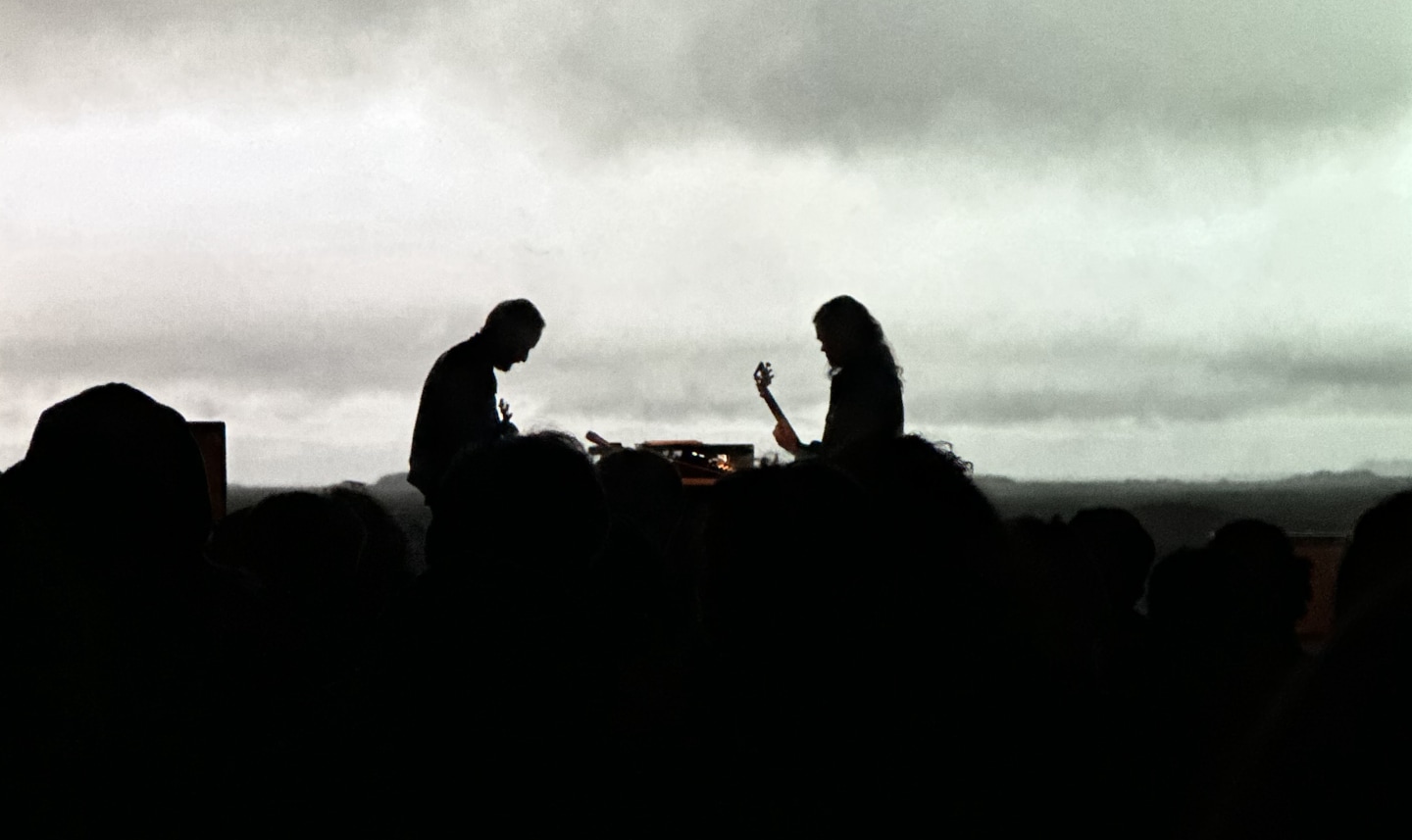
François Bonnet (left) and Stephen O’Malley. Photo by Raphael Helfand.
Interestingly, Malone’s solo, closing set embodied much more of Sunn O)))’s maximal minimalism than O’Malley and Bonnet’s did. Her synth tones were deep and booming from the start and only grew more so as she plowed on. Overtones accumulated, at times recalling the opening moments of the THX Deep Note, but they were quickly obliterated by an earth-eating sub-bass.
The arc of her performance was satisfyingly symmetrical, a longform exercise in attack and decay. Its climax came about halfway through, when the bass got so loud it made every molecule in the venue vibrate. In this moment, Malone’s drones conveyed several conflicting emotions all at once: intense agony, unfiltered ecstasy, and a sort of cosmic serenity that came as time collapsed on itself, creating a black hole in the center of the room.
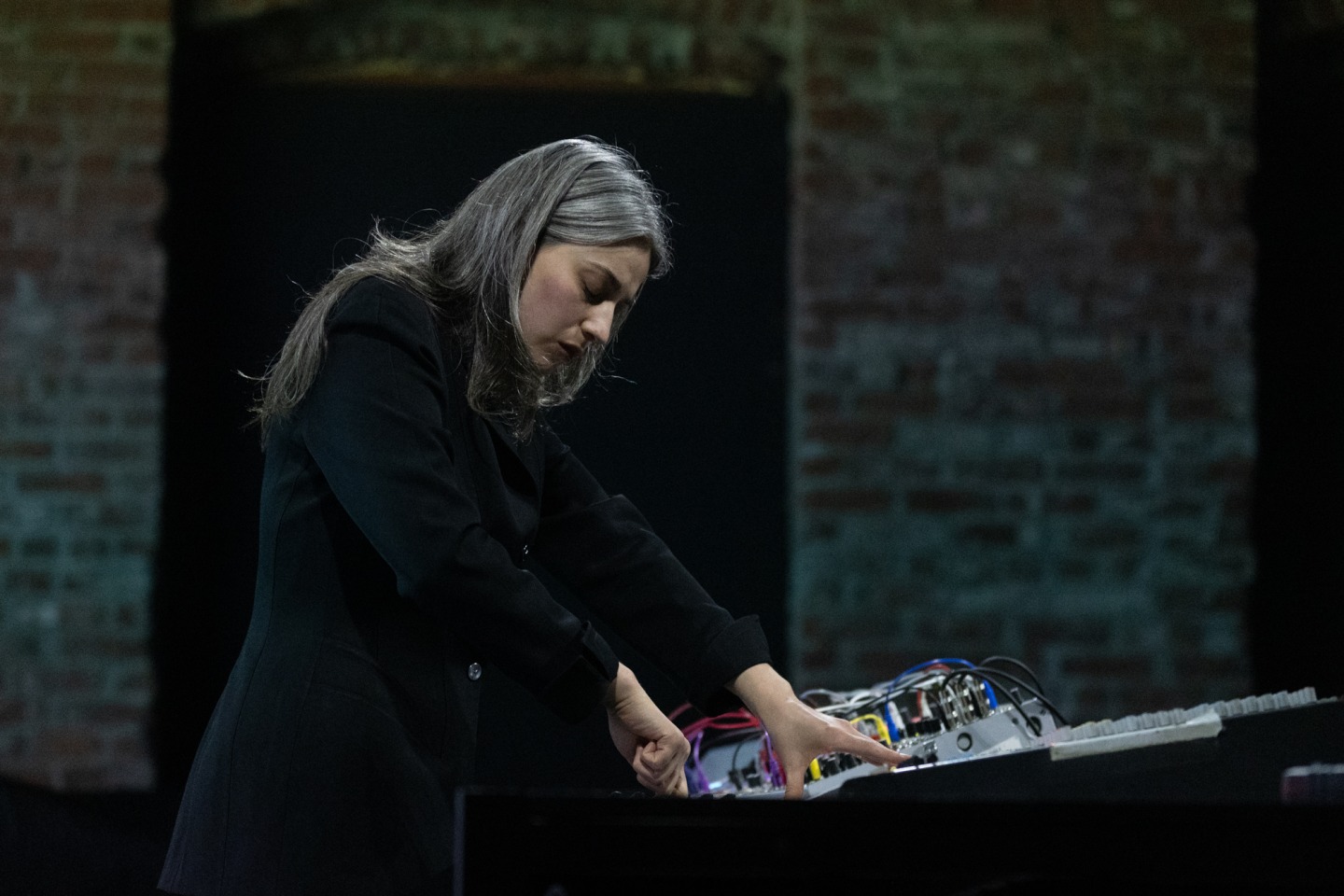
Kali Malone. Photo by Ellen Qbertplaya, courtesy of Pioneer Works.
The following night was William Basinski’s turn on the bandstand, with support from a supergroup of L.A.-based ambient boundary pusher claire rousay, her frequent east-coast collaborator more eaze (whose approach tends toward the maximalist), and LEYA, the Brooklyn experimental harp and violin duo of Marilu Donovan and Adam Markiewicz. The night was a much less purist affair than the previous one, with all artists involved using drone less as a framework than a tool for advancing their own musical agendas.
During the opening set, the LEYA half of the power quartet created short-form drones in old-school, La Monte Young/John Cale fashion — by sustaining extended notes on their instruments, without the aid of electronics. This was done in service of songs, however, a radical departure from the porous creations of the rest of Pioneer Works’ featured acts last week. Though generally more subdued in grandeur than the rest of these artists, their subtle compositions contained their own sort of slow-played ecstasy, especially when rousay chimed in on vocals, her voice cloaked in angelic Auto-Tune, complementing Markiewicz’s operatic warblings.
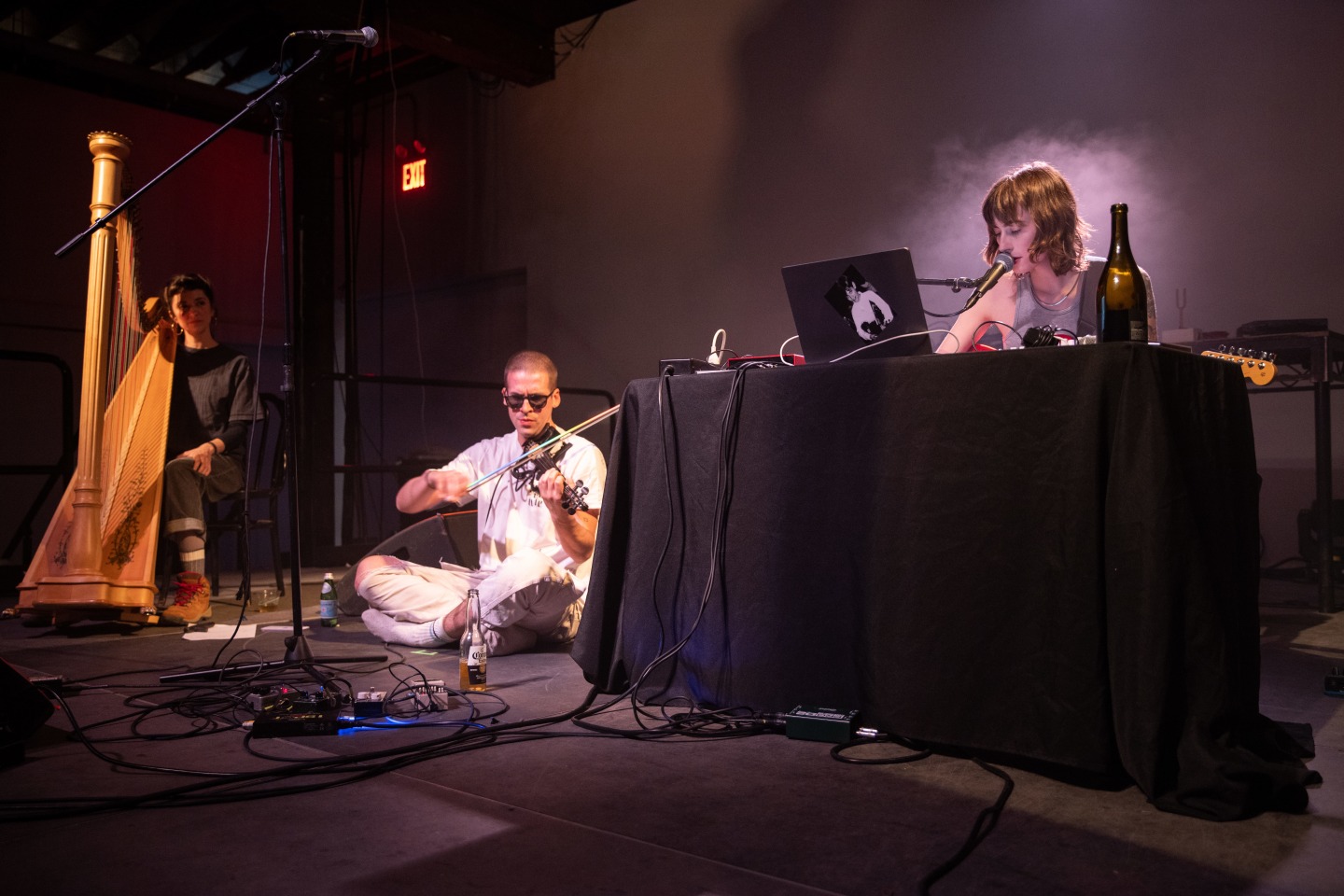
From left: LEYA’s Marilu Donovan and Adam Markiewicz, claire rousay. Photo by Walter Wlodarczyk, courtesy of Pioneer Works.
Basinski was the night’s chief focus, and he acted the part. Walking out in a sparkling leather blazer with a glass of white wine in hand, he proceeded to rant vaguely about society’s sordid state in an irresistible Texas drawl as he tinkered with his gear.
Like Malone, O’Malley, et al., Basinski traffics in oblong, amorphous sound shapes. The synthesized drone, however, is only one element in his broad arsenal, which also includes tape looping, sampling, and transcendent sax and clarinet playing. Best known for his four-hour ambient opus The Disintegration Loops, he’s been a prolific contributor to the experimental music canon for decades, and, at 65, has become an elder statesman of the avant garde.
On Thursday night, Basinski set forth a seemingly random stew of unfinished musical ideas — he himself called the set a “mess” — each bolder and stranger than the last, climaxing on a demented groove centering an opera sample that denatured in real time.
Despite his haphazard presentation of the materials at hand, though, the set coalesced around a theme of infinite exploration, and a pattern began to form: Basinski drops anchor on a new island and gathers every sound he can carry in his hands, then sets sail for the next destination. This hyperactive approach to nominally minimalist music struck a stark contrast with that of Wednesday’s featured artists, a speedboat to Malone’s ocean liner.

William Basinski. Photo by Walter Wlodarczyk, courtesy of Pioneer Works.
Drone is often reduced to a meme — an inaccessible monolith that contrarian music snobs only pretend to enjoy — or else to its functional capacity as a meditation and sleep aid. But the nine artists who performed at Pioneer Works in the space of two nights last week presented five drastically varying displays of drone’s infinite capabilities as a template, a tool, and a storytelling device.
The sustained tones that wavered across Wednesday and Thursday’s shows were at turns quixotic and laser-focused, goofy and somber, loud and quiet. In the end, though, they all emanated from a singular belief in music’s primitive power.

